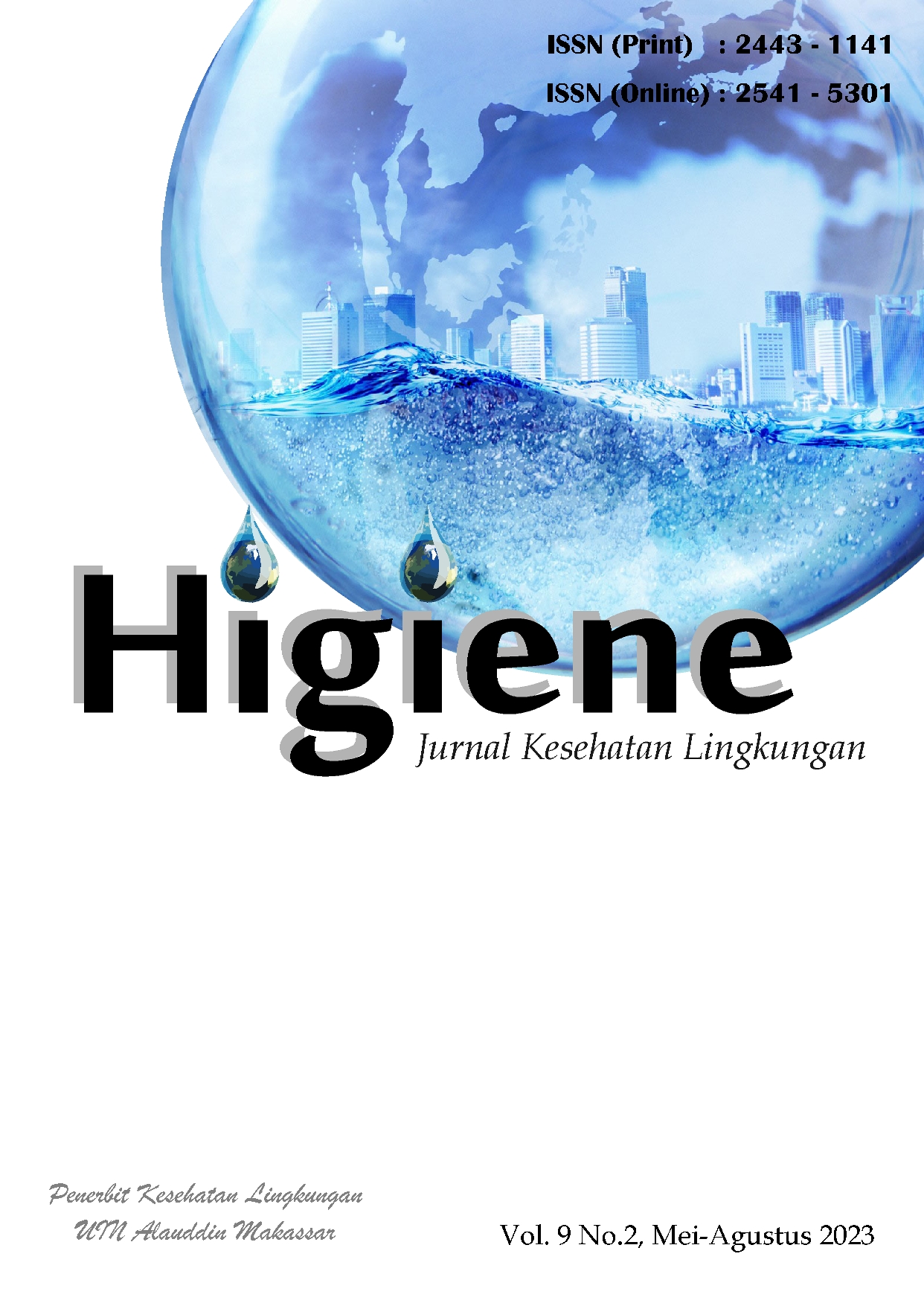Analysis Of Environmental Quality and Its Impact On Communities Around TPA Sukawinatan Palembang
Abstract
TPA Sukawinatan is one of the final disposal sites that is still operating actively in Palembang City. Garbage is often a risk for a city to become a megalopolis. With a large population and high growth rate, the amount of waste is increasing. Many cities in Indonesia have built Final Processing Sites (TPA) without regard to TPA production standards and without regard to Environmental Impact Analysis (AMDAL). The purpose of this study to identify the waste management system and community participation in Sukajaya Village, Sukarami District. Using cross-sectional, descriptive, observational research methods. With the population of abiotic components and samples of the surrounding community. Garbage produced by the Sukawinatan community is disposed of in a landfill, causing a pungent odor throughout the day. Environmental pollution due to waste has recently increased rapidly. On that basis, this study aims to determine whether the waste management at Sukawinatan TPA complies with the applicable budget based on Regional Regulation 7 of 2016. Environmental pollution in the Sukawinatan TPA area, especially in the air and soil, greatly impacts the health of the community resulting in a decrease in the level of public health. The active role of the community is also needed to live a clean and healthy life by applying the 4R principles and improving technology in waste management according to the type of waste.
Keywords : TPA, Waste Management, TPA Sukawinatan
References
Achmad Fickry Faisya, Dini Arista Putri, Yustini Ardillah. (2019). Analisis Risiko Kesehatan Lingkungan Paparan Hidrogen Sulfida (H2S) dan Ammonia (NH3) Pada Masyarakat Wilayah TPA Sukawinatan Kota Palembang Tahun 2018. Jurnal Kesehatan Lingkungan Indonesia 18 (2), 126 – 134
Hidayatullah, Farisa. (2020). Gangguan Saluran Penapasan Akibat Pencemaran Udara di. [Online] February 2, 2020. [Cited: February 16, 2023.] file:///C:/Users/user/Downloads/11114-39052-1-PB.pdf.
Kristian Agung, Erna Juita, Elvi Zuriyani. (2021)Analisis Pengelolaan Sampah Di Tempat Pembuangan Akhir (TPA)Desa SidoMakmur Kecamatan Sipora Utara. [Online] September 2, 2021. [Cited: February 16, 2023.] https://ejournal.unikama.ac.id/index.php/JPIG/article/view/5936/3281.
Mahalastri NND. (2014). Hubungan Antara Pencemaran Udara Dalam Ruang Dengan Kejadian Pneumonia Balita. Jurnal Berkala Epidemiologi. 3 September 2014; 2 (3): 392–403.
Nukman A, Rahman A, Warouw S, Setiadi MI, Akib CR. Analisis dan Manajemen Risiko Kesehatan Pencemaran Udara: Studi Kasus Di Sembilan Kota Besar Padat Transportasi. Jurnal Ekologi Kesehatan; 4 (2): 270-289.
Rahmadani, Tualeka AR. (2016). Karakteristik Risiko Kesehatan Akibat Paparan Polutan Udara Pada Pekerja Sol Sepatu (Di Sekitar Jalan Raya Bubutan Kota Surabaya). Jurnal Kesehatan Lingkungan Juli 2016; 8(2): 164 -171.
Rahmat A. (2015). Analisis Risiko Pajanan NH3 Dan H2S Terhadap Gangguan Pernapasan Pada Penduduk Di Sekitar Tempat Pembuangan Akhir Sampah Bukit Pinang Samarinda. Universitas Widya Gama, Samarinda; 2015
Rahmi Garmini, Rachmadhi Purwana. (2020). Polusi Udara Dalam Rumah Terhadap Infeksi Saluran Pernafasan Akut pada Balita di TPA Sukawinatan Palembang. Jurnal Kesehatan Lingkungan Indonesia 19 (1), 1 – 6.
Rochmawati, d. P. (2017). Analisis Kualitas Lingkungan dan Status Kesehatan Masyarakat Di Sekitar Tempat Pembuangan Akhir (TPA) Sampah Batu Layang Kota Pontianak. Jurnal Kesehatan Masyarakat Khatulistiwa, 2017; 253-263.
Verma SS, Desai B. (2008). Effect of Meteorological Conditions on Air Pollution of Surat City. J. Int. Environmental Application & Science; 3(5): 358-367.
World Health Organization. (2007). Pencegahan dan pengendalian infeksi saluran pernapasan akut (ISPA) yang cenderung menjadi epidemi dan pandemi di fasilitas pelayanan kesehatan. Geneva: WHO. 6p.
Copyright (c) 2024 HIGIENE: Jurnal Kesehatan Lingkungan

This work is licensed under a Creative Commons Attribution 4.0 International License.


